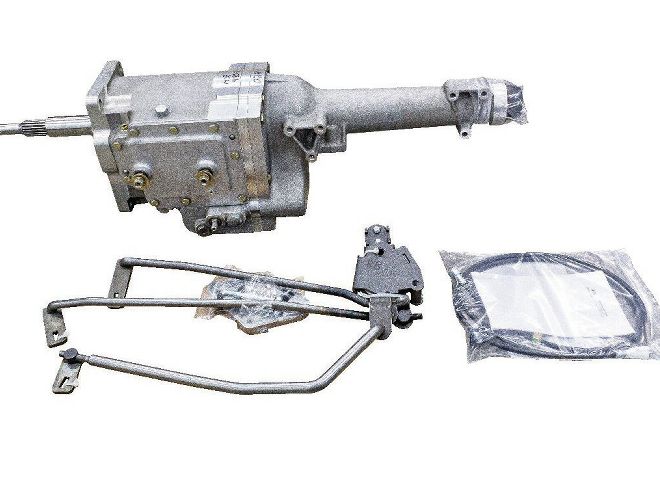
For some, driving is more than just accelerating, braking, and turning the wheel. To them operating a motor vehicle means that they get to do it, not some programmer who sets up a bunch of operational parameters based on a set of focus group studies and EPA regulations. They want to decide how and when to shift, what cruising rpm they like, whether or not to use overdrive, and even to skip a gear if they choose.
They may not have anything against automatic transmissions per se: It's just that they believe that there is a certain purity in having complete control over their driving experience. Automatics are fine if you don't want to have to think or make any decisions as you're going along, but if you are really a true driver, then full manual is the only way to go.
Such became the case with the owner of a 1970 Dodge Challenger who had the guys at Muscle Car Restorations in Chippewa Falls, Wisconsin, upgrade his powerplant from a 383 four-barrel to a 512 stroker with a six-pack. The fun meter certainly registered a significant increase but the 727 behind the 512 was keeping it from tickling the fun zone of the tachometer.
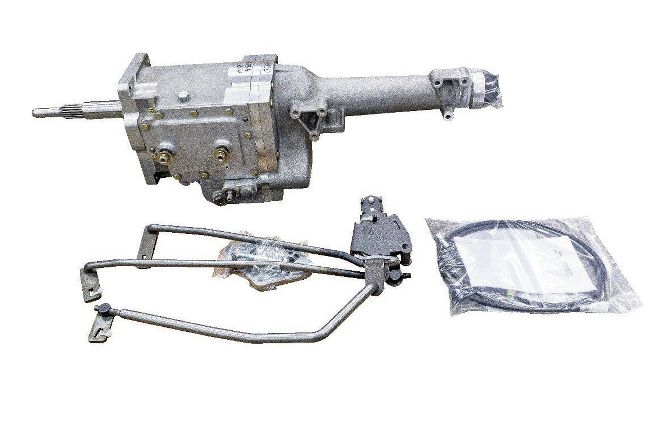
The Passon five-speed is built to directly replace the four-speed 833, but, of course, a different shifter is required to accommodate the extra gear. The shifter comes pre-adjusted to the trans from Passon so it doesn't allow the shift rods to turn. An extra-long speedo cable is also included with the kit.
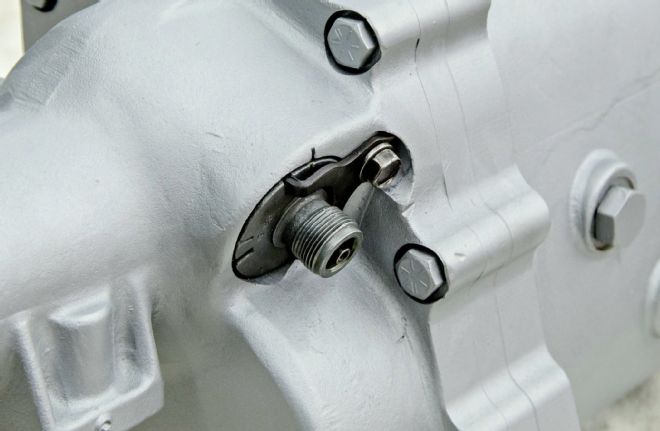
While this trans is a direct bolt-in replacement for the factory four-speed, the redesign for the extra gear necessitated moving the speedometer gear to the other side, hence the extra-long cable supplied with the trans.
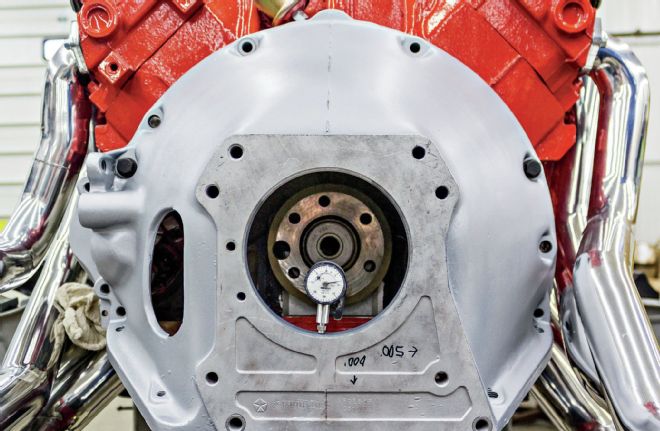
Even though a stock bellhousing is being used, the guys at MCR still insist on checking to be sure it fits properly. Also, do nto be that guy who forgets to install the pilot bushing in the back of the crank.
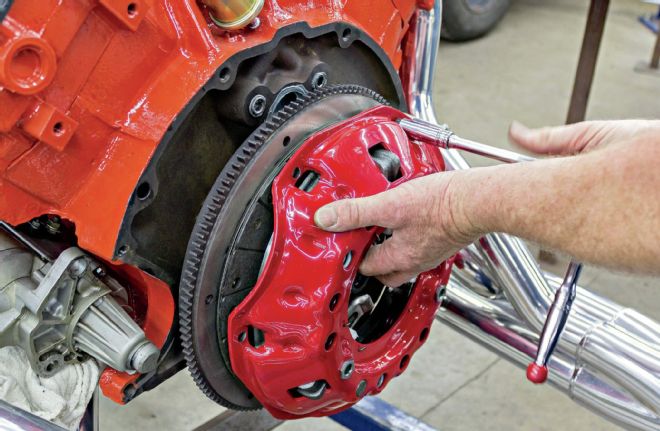
If you've never installed or replaced a cluch before, be sure to use a pilot shaft to ensure proper alignment as you are bolting on the pressure plate. That way your transmission's input shaft will slide through the clutch and into the pilot bushing with ease.
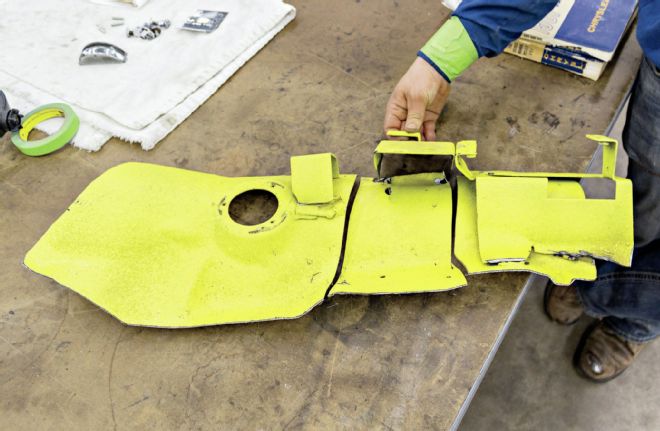
Obviously, a hole will be needed in the floor for the shifter so the old floor hump was removed. Since this is a console car, the front console mount will need to be saved and modified to fit on the new hump, or Passon can supply you with the correct part if you'd rather not make the modifications yourself.
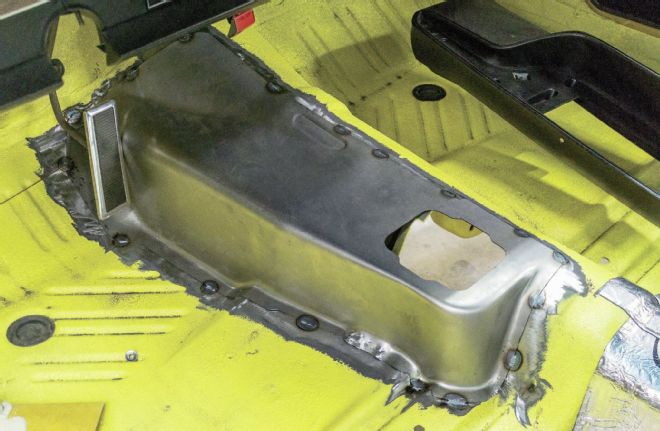
Passon can provide the proper manual-trans floor hump so that whether a four- or a five-speed is being installed, the trans will fit in the car like it came that way.
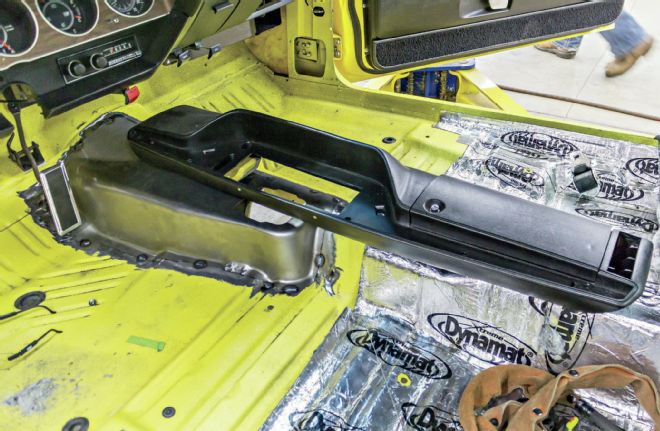
The console itself can be used to determine where the front mount needs to be attached.
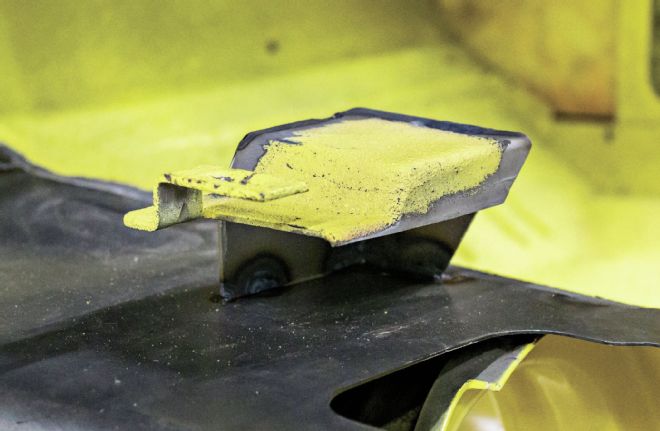
The new hump is a different shape so the console mount will need to be modified to fit in the proper location and height.
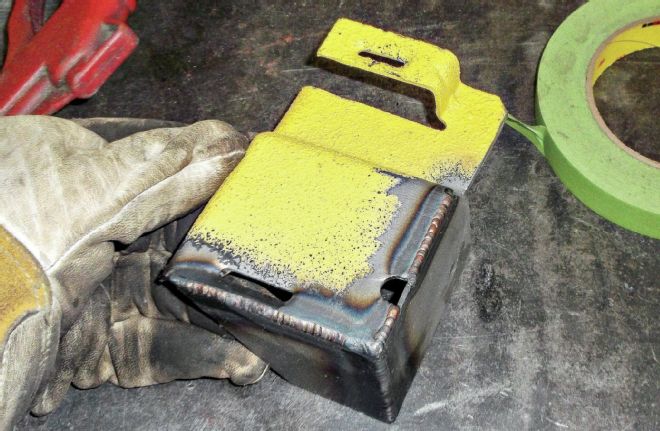
Here you can see how MCR modified the console bracket so it can be correctly placed on the new hump.
A Hemi four-speed would have been a great choice of course, but as it turns out Jamie Passon of Passon Performance had just released his brand-new five-speed (A-855 E-Body trans, $4,495) that is a direct bolt-in replacement for the A-833. This is still an auto-to-manual conversion, but in this case the owner is basically getting his four-speed plus the option of an overdrive gear. The more choices, the better.
Along with his new five-speed, Passon also offers a complete conversion kit that includes everything you need to do an auto-to-manual conversion. It not only includes the bellhousing, flywheel, and clutch parts, but also a new floor hump, the Z-bar frame bracket, the clutch linkage, and even a repro pistol-grip shift handle along with the shifter boot and bezel.
…if you are really a true driver, then full manual is the only way to go.
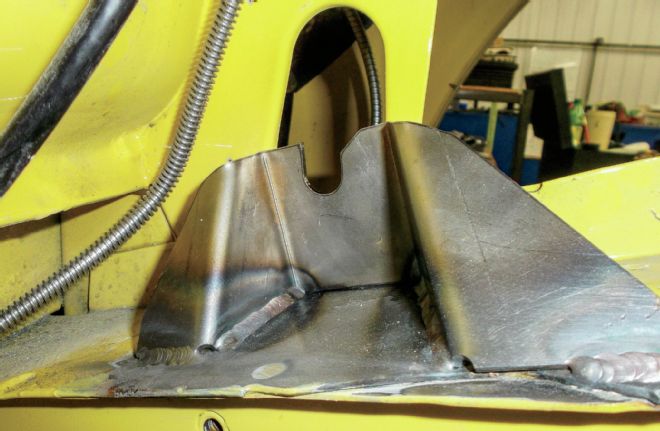
In addition to the floor hump, a Z-bar frame bracket will need to be welded in place. Unless you know exactly how to place this part, MCR recommends mocking up all of the clutch linkage with the engine and transmission in place. Tack weld the bracket to the frame, then check for proper clutch operation before the final welds.
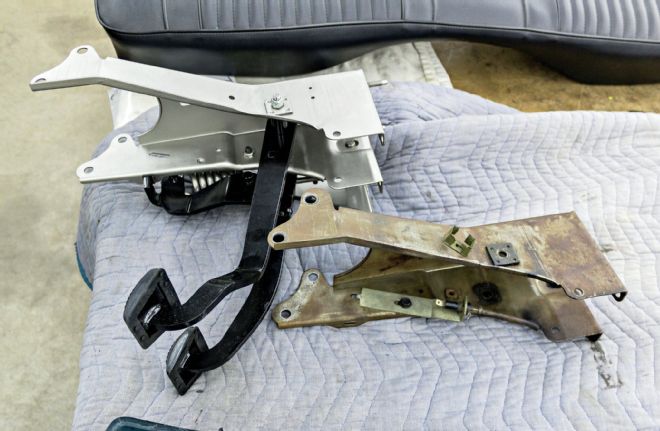
Since working a manual trans requires an extra pedal, a new pedal assembly will need to be installed. Remember to save the brake light switch from the old bracket.
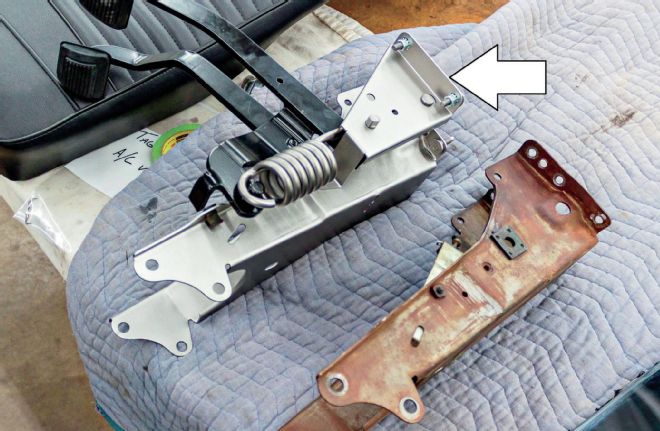
Notice the extra bracket on the clutch pedal side of the pedal assembly. Two new holes will need to be drilled in the firewall.
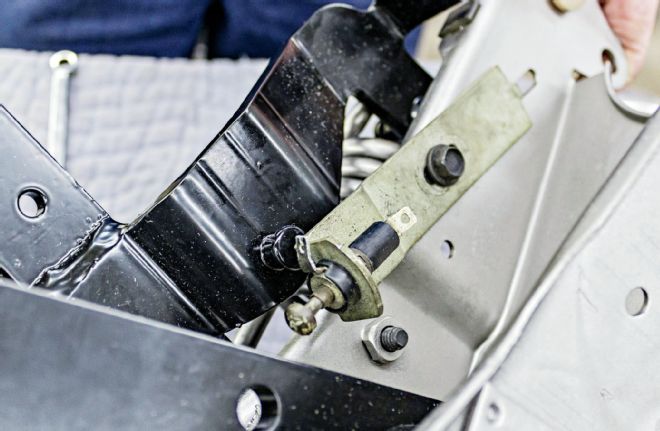
The old brake light switch will be used on the new assembly. Don't forget to properly adjust it once the new pedals are in place.
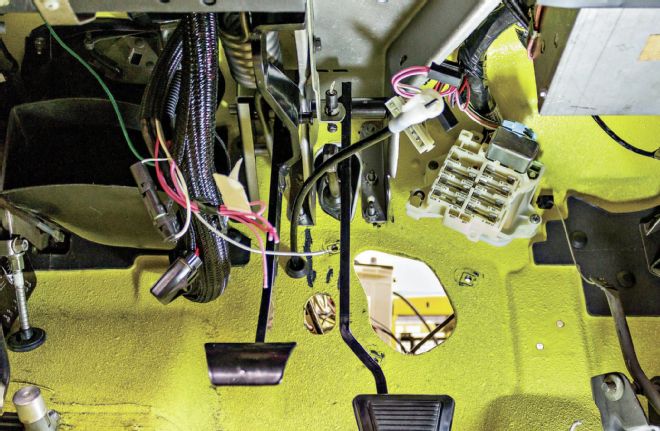
Installing the new pedal assembly is fairly straightforward except that there is an additional bracket on the clutch pedal side that will need two new holes to bolt to the firewall. Most Chrysler muscle cars will already have dimples in the firewall marking the location for these holes. If that's not the case, with the pedal assembly in place, the positions for the holes can be marked from the inside, but it's much easier to move the master cylinder to the side and drill the holes from other side of the firewall.
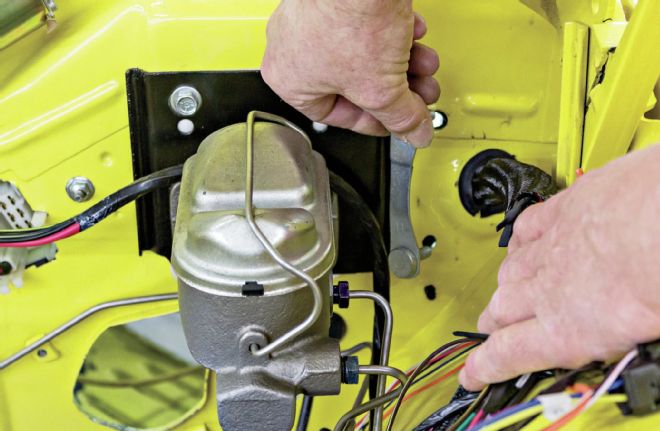
This little stiffening bracket is used to attach the clutch pedal side of the pedal assembly to the firewall.
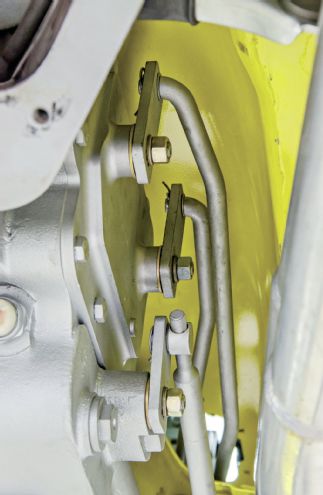
This is one of the reasons to install the manual trans floor hump instead of trying to modify the existing one—to have plenty of room for clearance and access to the shift rods.
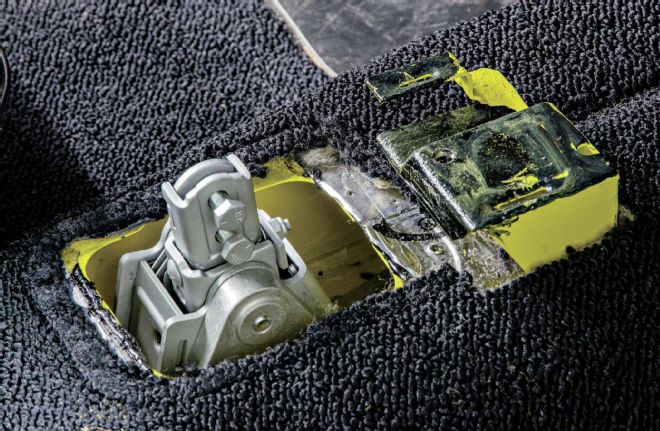
A hole will need to be cut in the carpeting for the shifter and also a little trimming will be required to fit around the modified console mount.
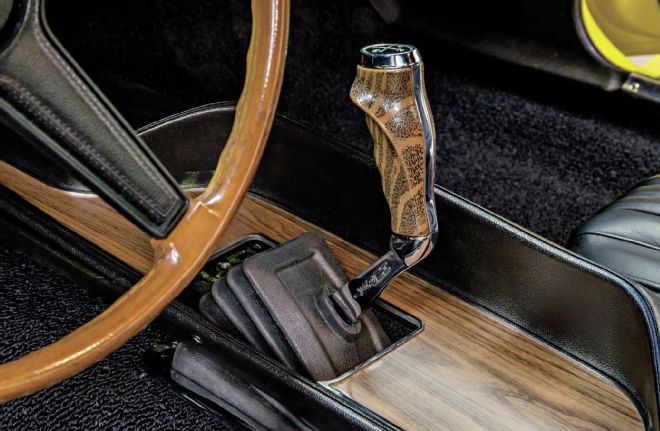
Looks like it came that way from the factory. If the five-speed pattern isn't installed on top of the shifter, no one will be able to tell that there is an extra gear. With that extra gear though comes the temptation to put some deeper gears in the rear. Maybe that could twist the fun meter needle right off the shaft!